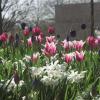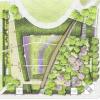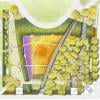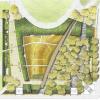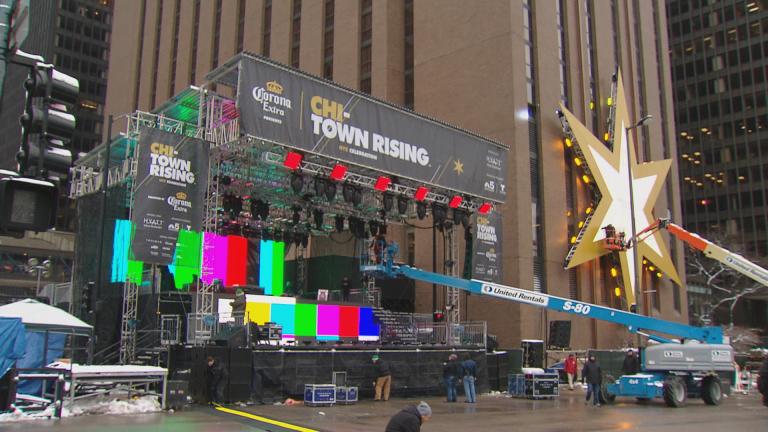We talk to Noel Kingsbury, author of a new book “Gardening with Perennials,” about lessons local gardeners can learn from Chicago’s Lurie Garden. This unique Millennium Park garden pays homage to Chicago's transformation from flat marshland to innovative green city. View a slideshow.
Read an excerpt from the book.
The Story of the Lurie Garden
Millennium Park was the final piece of the jigsaw puzzle for the development of the lakeside area of Chicago. Most of that area, which had been part of Daniel Burnham’s 1909 plan for Chicago, became Grant Park. Millennium Park, 24.5 acres in all, was thought of as a covering for an underground parking garage, itself built over the tracks of the Metra/ Illinois Central Railroad. The making of relatively enclosed gardens in public parks is an old tradition, a way of concentrating an ornamental horticultural element and providing a quiet place in the larger, and sometimes noisier, park environment. Richard Driehaus, one of the original founders of Millennium Park, offered to underwrite an invited competition for the design of a garden in Millennium Park. The Ann and Robert H. Lurie Foundation agreed to provide an endowment for the future maintenance of the garden, which was to be named the Lurie Garden, in honor of their $10 million gift.
After considerable jury deliberation, the competition was won by Gustafson Guthrie Nichol (GGN). The principal, Kathryn Gustafson, had a reputation as one of the world’s leading landscape designers; originally a fashion designer, she turned to landscapes and made a name for herself with a number of projects in France (e.g., the L’Oreal factory and the Rights of Man Square, in Évry). The winning plan was developed in conjunction with theater and opera designer Robert Israel and Dutch garden designer Piet Oudolf. Gustafson and Oudolf were asked to submit designs separately, but given their complementary talents, they had decided that collaboration was the best way forward.
Oudolf’s reputation had spread beyond the world of the garden with plantings for the Dreampark in the city of Enköping, Sweden, and a number of visitor destination projects in England: for the Royal Horticultural Society garden at Wisley, near London, and for the Pensthorpe Waterfowl Trust in the east of the country.
Gustafson describes meeting Oudolf: “When I was considering the Chicago competition...we’d both read the brief at the same time...I thought his work was extraordinary, I picked up the phone and suggested we collaborate.” Collaborations between professionals in landscape and garden design have been rare up to now, but in Gustafson’s view, “I think Piet has changed the way landscape architects see gardeners and horticulture professionals, they see them with a better understanding of what they can bring to a project...we had decided that we don’t know this type of perennial planting well enough and we need to bring in expertise.” The Lurie Garden is a striking example of the success of such collaboration, but unlike great works of architecture, it has much to teach the ordinary home gardener, which is the message of this book.
Excerpted from Gardening with Perennials by Noel Kingsbury (University of Chicago Press). Reprinted with permission of publisher.
Revisit our 2011 profile about Chicago's Lurie Garden.
--Kristen Thometz and Taurean Small contributed to this report.












